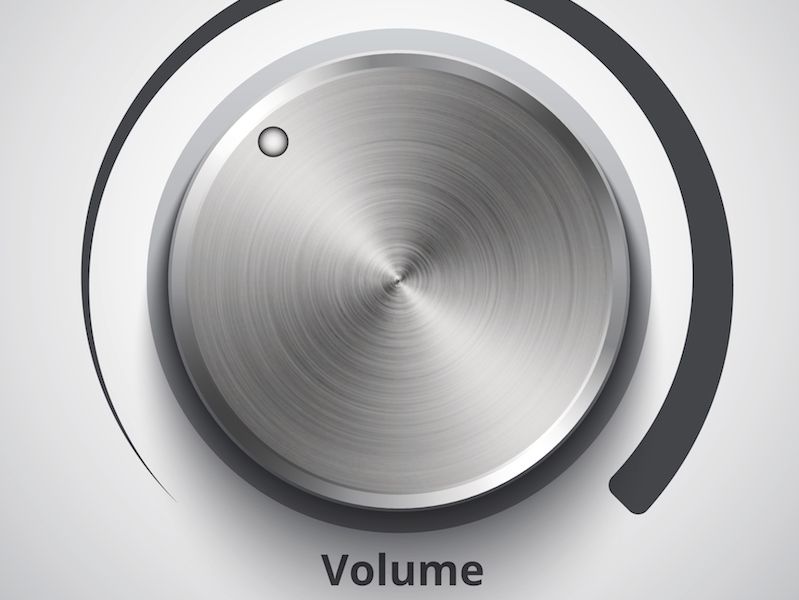
Have you ever gone to the beach and seen one of those “Beware of Shark” warnings? It’s not exactly a sign you disregard. You might even think twice about swimming at all with a sign like that (if the warning is written in big red letters that’s particularly true). But people don’t tend to heed cautions about their hearing in the same way for some reason.
Current research has found that millions of people disregard warning signs regarding their hearing (there’s no doubt that this is a global concern, though these studies were specifically conducted in the United Kingdom). Knowledge is a big part of the problem. Fear of sharks is rather instinctive. But being afraid of loud noise? And the real question is, what volume level is too loud?
Loud And Dangerous Sound is All Around us
Your ears are not just in peril at a rock concert or on the floor of a machine shop (not to downplay the hearing hazards of these scenarios). Many every-day sounds can be harmful. That’s because it isn’t just the volume of a sound that presents a danger; it’s also how long you’re exposed. Your hearing can be damaged with even low level sounds like dense city traffic if you’re exposed to it for more than a couple of hours at a time.
keep reading to find out when sound gets too loud:
- 30 dB: Everyday conversation would be at this volume level. You should be perfectly fine at this level for an indefinite period.
- 80 – 85 dB: An air conditioner, heavy traffic, and a lawnmower are at this level of sound. This volume will usually become dangerous after two hours of exposure.
- 90 – 95 dB: A motorcycle is a good illustration of this sound level. This amount of exposure becomes dangerous in as little as 50 minutes of exposure.
- 100 dB: This is the amount of noise you may encounter at a mid-size sports event or an oncoming subway train (depending on the city, of course). 15 minutes of exposure will be enough to be dangerous at this volume.
- 110 dB: Do you ever turn the volume on your earpods up as high as it will go? On most smartphones, that’s about this volume. This level of exposure will become dangerous after only 5 minutes of exposure.
- 120 dB and over: Instant pain and injury can occur at or above this volume (think about an arena sized sports event or rock concert).
What Does 85 dB Sound Like?
Generally speaking, you’re in the danger zone when you’re experiencing any sound 85 dB or above. The issue is that it isn’t always clear just how loud 85 dB is. It’s not tangible in the way that a shark is tangible.
And hearing cautions often get neglected because of this when the sound environment isn’t loud enough to cause pain, this is specifically true. Here are a couple of potential solutions:
- Download an app: Your ears can’t be immediately protected with an app. But there are a few sound level metering apps. It’s hard to determine what 85 dB feels like so your hearing can be damaged without you even knowing it. Making use of this app to keep track of sound levels, then, is the solution. This will help you develop a sense for when you’re entering the “danger zone” (Or, the app will simply let you know when things get too noisy).
- Sufficient training and signage: This applies to the workplace, in particular. Training and signage can help reinforce the real hazards of hearing loss (and the advantages of hearing protection). In addition, just how noisy your workspace is, can be made clear by signage. Helping employees know when hearing protection is suggested or required with appropriate training can be very useful.
If You’re in Doubt, Protect Yourself
Signage and apps aren’t a foolproof answer. So make the effort to protect your ears if you are in doubt. Noise damage, over a long enough time period, can lead to hearing loss. And it’s easier than it ever has been to damage your ears (it’s a simple matter of listening to your music too loudly).
If you’re listening to headphones all day, you should not turn up the volume past the mid-mark. If you keep turning it up to hear your music over background sound you need different headphones that have noise cancellation.
So when volume becomes too loud, it’s important to accept it. And to do that, you need to raise your own recognition and knowledge level. It isn’t difficult to reduce your exposure or at least wear ear protection. That begins with a little knowledge of when you should do it.
These days that should also be easier. That’s even more relevant now that you have some insight.
Schedule a hearing test today if you think you might have hearing loss.
